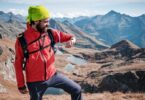Be prepared for the unexpected, whether you embark on a day trek or a week-long camping trip. If the weather suddenly changes or if you run out of water or slip and fall, you could be in serious trouble in a matter of seconds. Therefore, having a survival kit at hand is essential.
There are 12 excellent pieces of equipment for wilderness survival that you can quickly store in your backpack or add to your camper kit. All of these supplies will be useful for setting up camp, regardless of whether your outdoor trip goes haywire.
Visit thesimplesurvival.com for more outdoor survival ideas and methods.
- Fire Starter – An effective fire starter is one of the most critical survival tools you can have in your backpack. The ability to start a fire in the woods is essential for surviving the cold, fighting off hungry animals, preparing meals for yourself, and sleeping without fear of danger. A better option is to carry fire starters in waterproof containers, store them separately, and have them readily available at all times.
Survival Knife/Multi-Tool
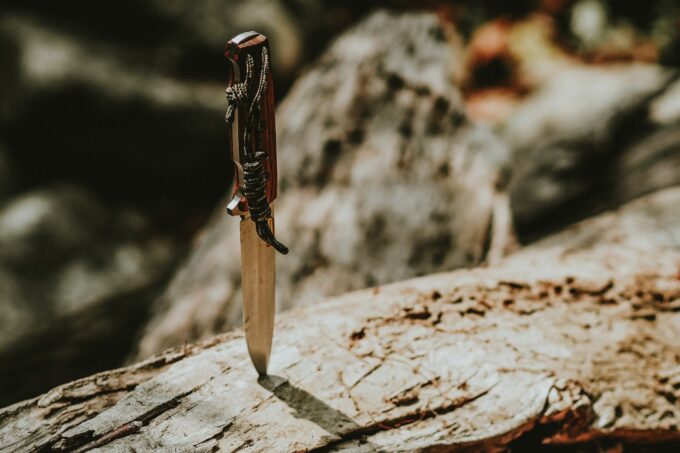
Source: unsplash.com
When it comes to choosing the appropriate multi-tool or survival knife, it’s really a matter of personal preference. Your abilities and the types of activities you expect to do should be taken into consideration when selecting a tool. Knives make some individuals feel safer, whereas multi-tools are preferred by many others. There are blades that look like machetes that can be used to cut firewood. For those times when taking notes is part of your emergency plan, tactical pens are available. Whatever you select, keep it in your bag at all times.
First Aid Kit
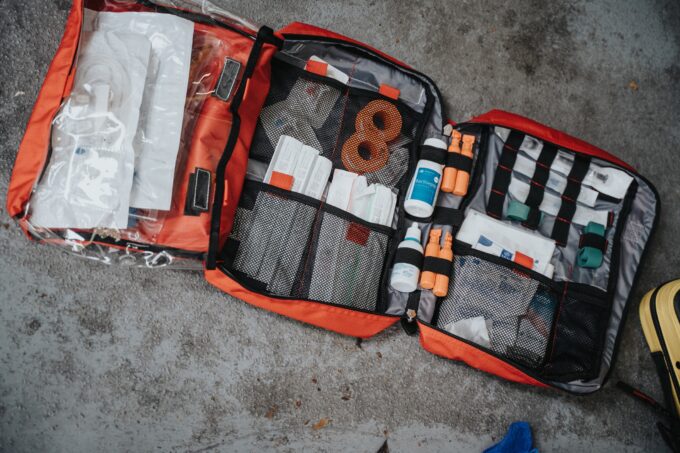
Source: unsplash.com
This is especially important if you’ve been injured or been unwell in the bush. If you’re planning a first aid kit, consider including items that can double as survival equipment. As a starting point, general first aid kits are a wonderful idea, but don’t forget to complement them with supplies such as pressure dressings to stop bleeding in the event that an accident does occur. You can eliminate a lot of guessing by investing in a first aid pack built particularly for outdoor survival. A separate first aid kit can be purchased and kept in your vehicle, especially if you often go car camping or live the van life.
- Topographic Map – An accurate topographic map should always accompany you on any trek, no matter how short and simple it is. It’s easy to get lost if you stray from the path, even if you’re familiar with the area. The chances of being lost on a walk or backpacking trip are still slim, but it’s still a good idea to learn how to study a topographic map. Enjoy learning more about the region, and you never know, it could be one of your life saving strategies.
- Compass – An accurate compass is just as necessary as your topographic map. If you know how to read one accurately, it’s small, analogue, and easy to use alone or in conjunction with other equipment. Orienteering can be learned via a local outfitter or hiking/mountaineering organization.
- Emergency Whistle – All types of wilderness situations call for the use of a loud, effective whistle. In the wilderness, where humans are few and animals are numerous, it’s one of the most important survival gear you may have with you. While a 100-decibel whistle will cut through the ambient noise and travel long distances, it will also warn creatures like bears to your proximity. It’s a good idea to keep it linked to the person, not simply in your pack, in case you lose your stuff.
Cordage
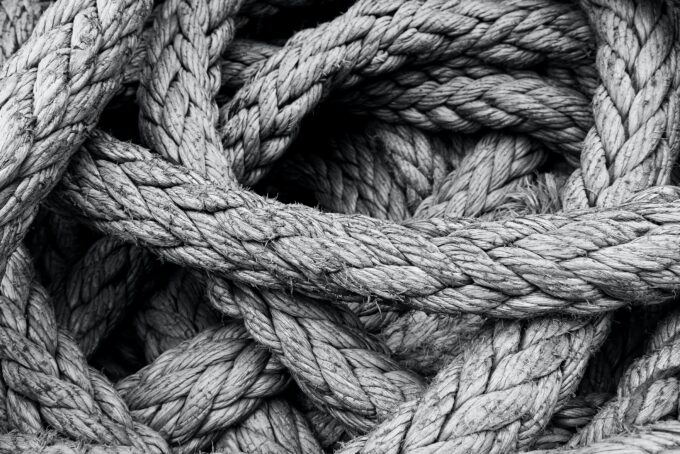
Source: unsplash.com
As a survival tool, cordage is essential for climbing difficult terrain, dragging wildlife you’ve killed, and tying bundles of firewood, among many other uses. Any metal wire or nylon string can be described as cordage, as it is the most frequent term used to describe them all. A sleek and superior cordage turns out to be lifesaving in a live or die emergency.
- SPOT Locator – A SPOT, being a gadget is preferred by the netizens of today over the traditional compass and topo maps.
A Spot transmits your precise location to rescue services in cases of dire emergencies.
When mobile phone service fails a SPOT comes in handy to transmit GPS coordinates from wherever you are. Some varieties of SPOT locator in the market can also be utilized to convey messages of importance regarding a change in schedule to your near and dear ones. - Water Filtration – A human being, on average, can only survive for about 72 hours without drinking any water. It is better to be safe and carry more than to be sorry by carrying less. A gallon of water is the recommended intake per human per day. On a trek it is mandatory to consume a significant amount beyond that. Although you may be able to obtain some water in the wilderness, drinking it straight from the source without adequate filtration can make you severely ill. A water filter can turn out to be lifesaving in such grave situations. Also, water filters, on the other hand, are a must-have for everyone.
- Flashlight – Even the most seasoned of adventurers might become disoriented if they are completely enveloped in darkness. A dependable flashlight is a must-have in any survival pack if you’re going to be venturing into unknown areas or finding yourself outside after dark. Innovation has tuned torches into more sophisticated, smaller, more efficient and effective tools. A torch or a tiny pocket-sized flashlight is usually a good idea, even if you’re simply planning a day walk.
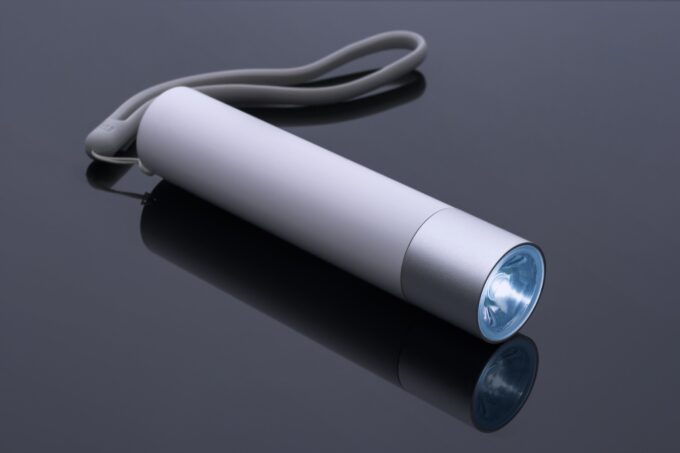
Source: unsplash.com
- Suitable Clothing – Even on a hot bright day, you need to be prepared for the worst when venturing into the wilderness. Majority of the deaths in the wilderness are caused by Hypothermia. We cannot rely solely on fire to keep us warm at night. A loose fit outfit over a woolen underlay is the best combination when trekking. Cotton should be avoided in general. That makes it less insulating, more difficult to dry out, and bulkier. This has been linked to hypothermia, pneumonia, and other health issues. Synthetic and wool clothing is suggested for this reason exclusively.
- Tarp – The ability to create a survival igloo isn’t always guaranteed, and sometimes you just want to wrap your space blanket over your body, not hoist it over your head. A tarp is an essential survival gear for this reason. This versatile piece of tarp can be used to collect drinking water and serve as a ground cushion for your tent or campsite. A strong, durable tarp is one of the most adaptable survival tools.






